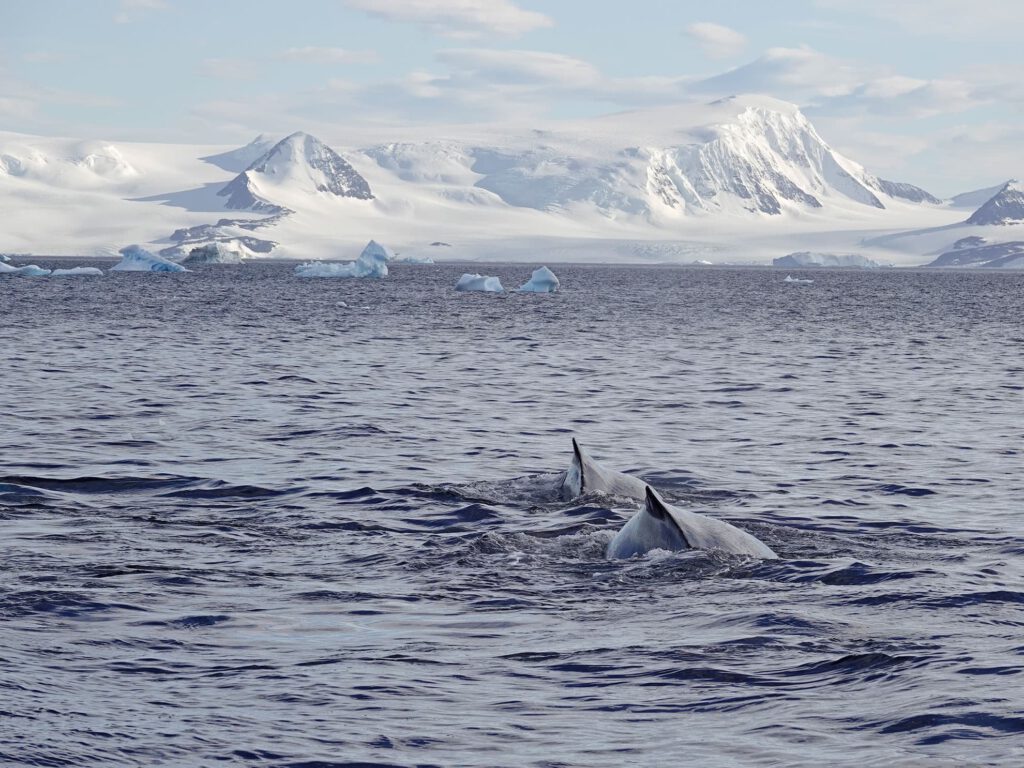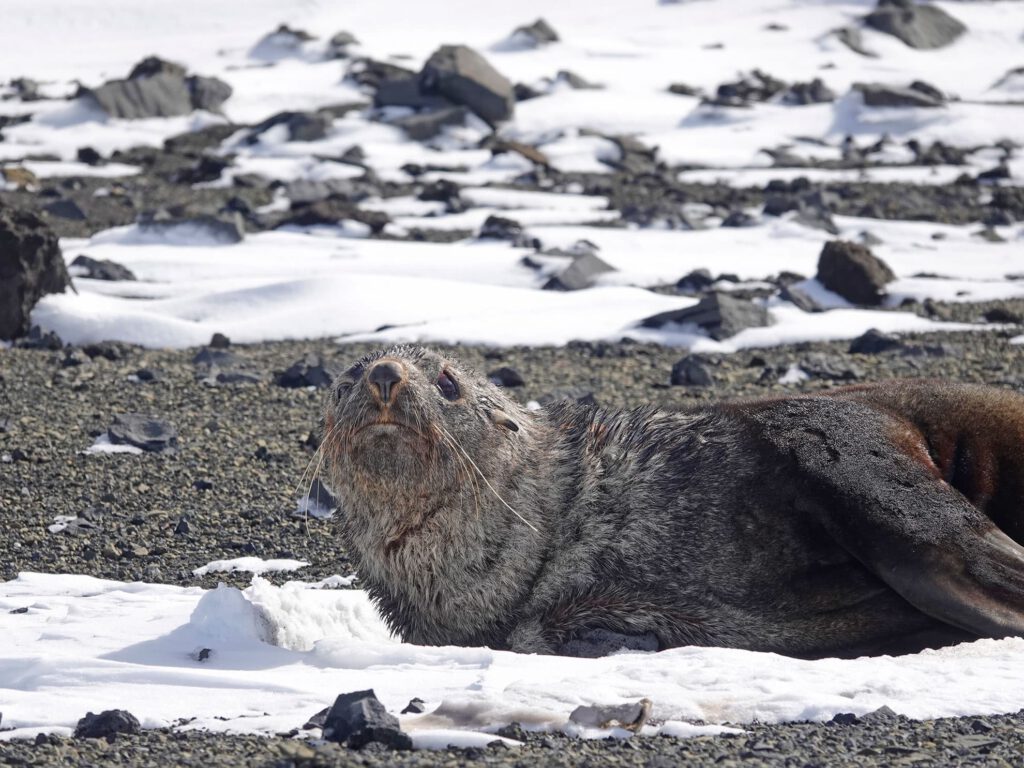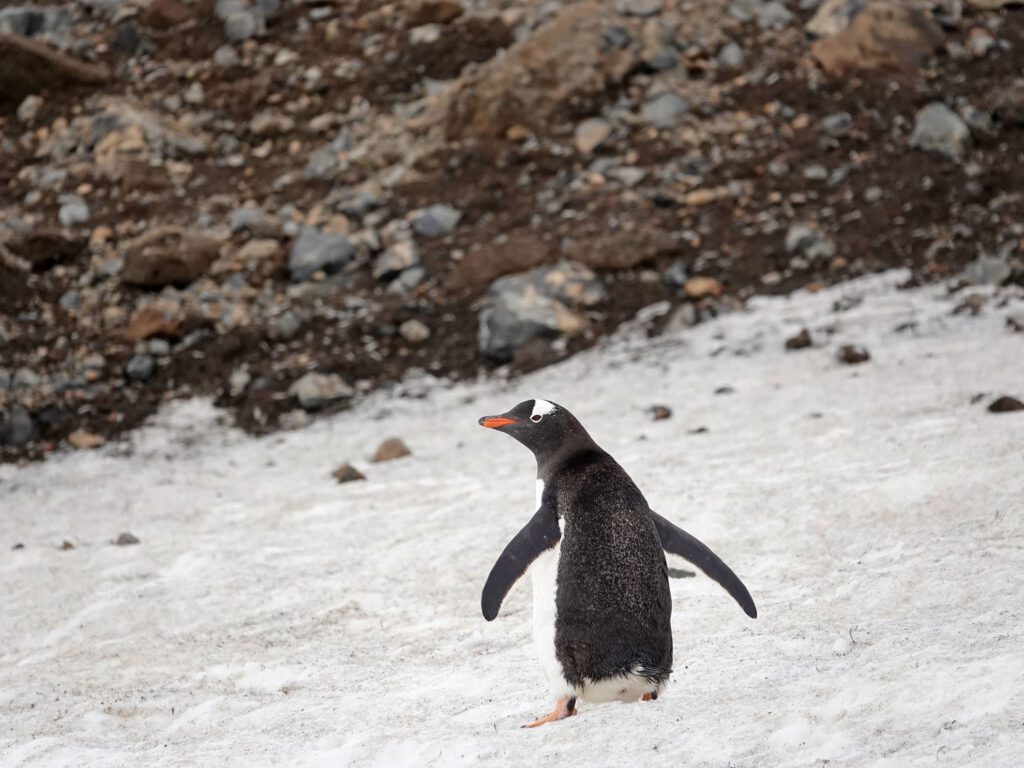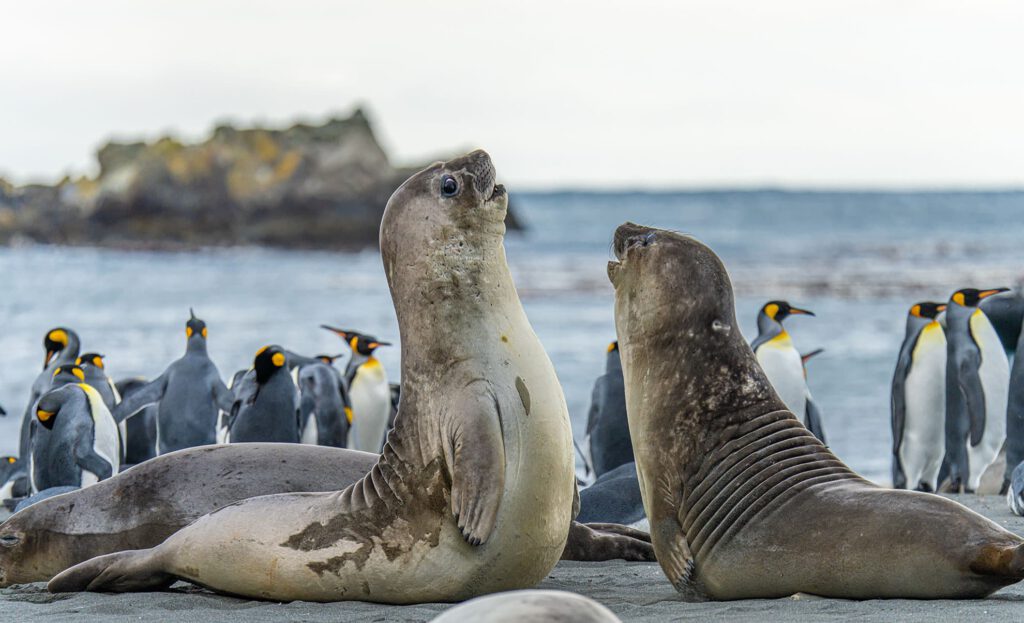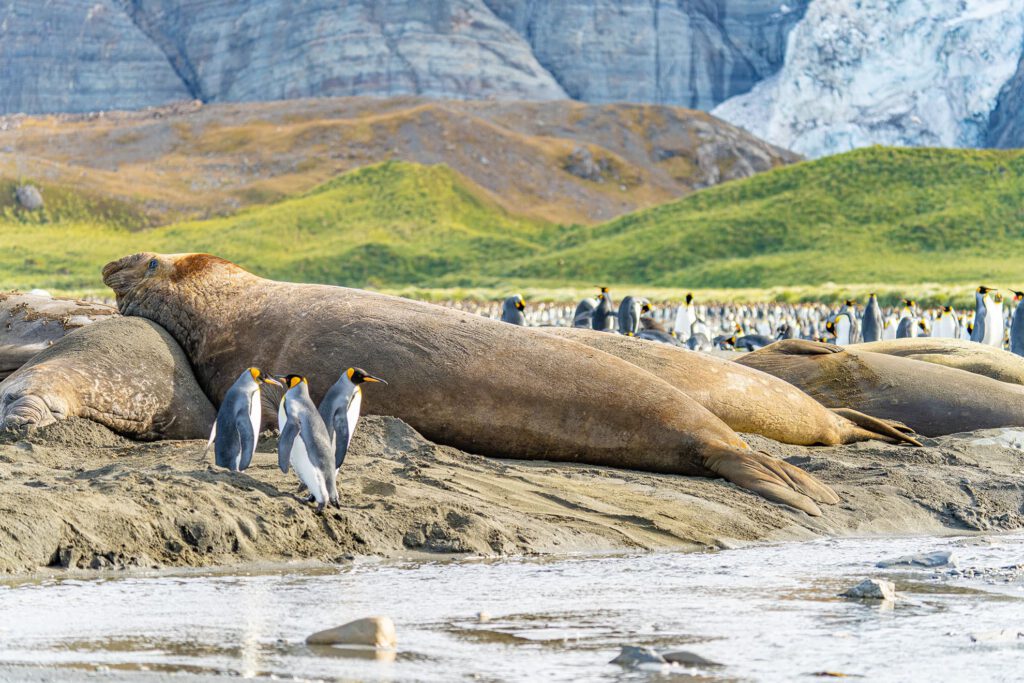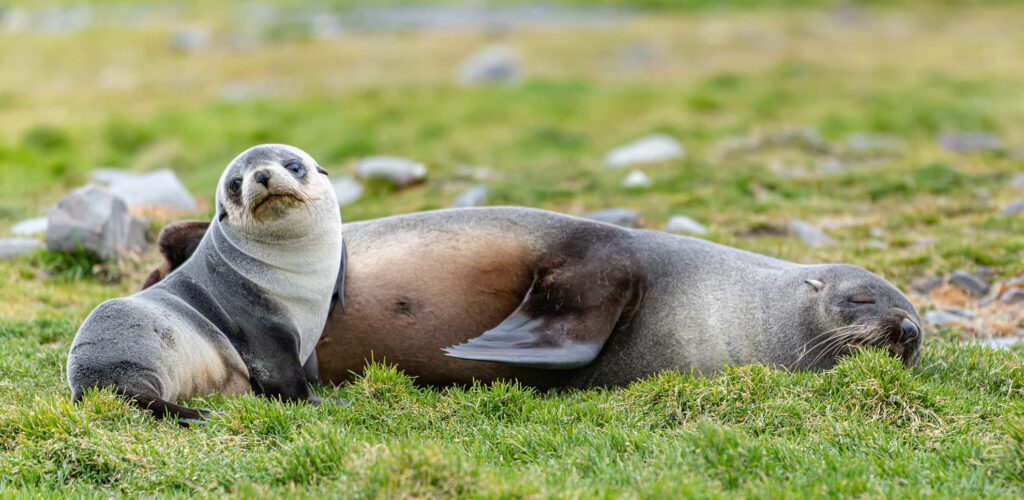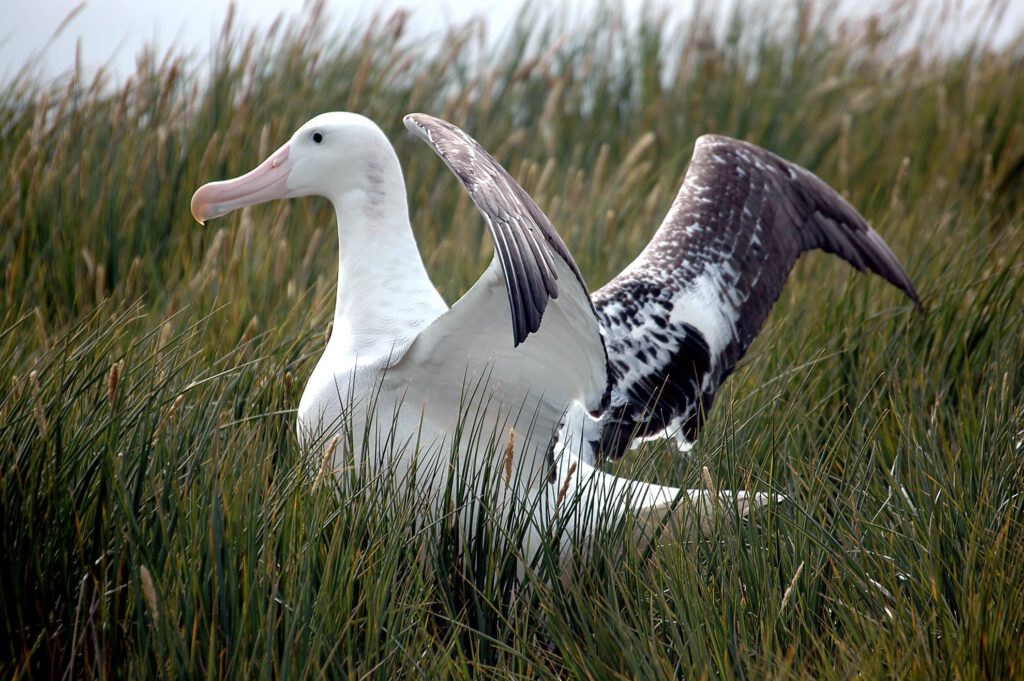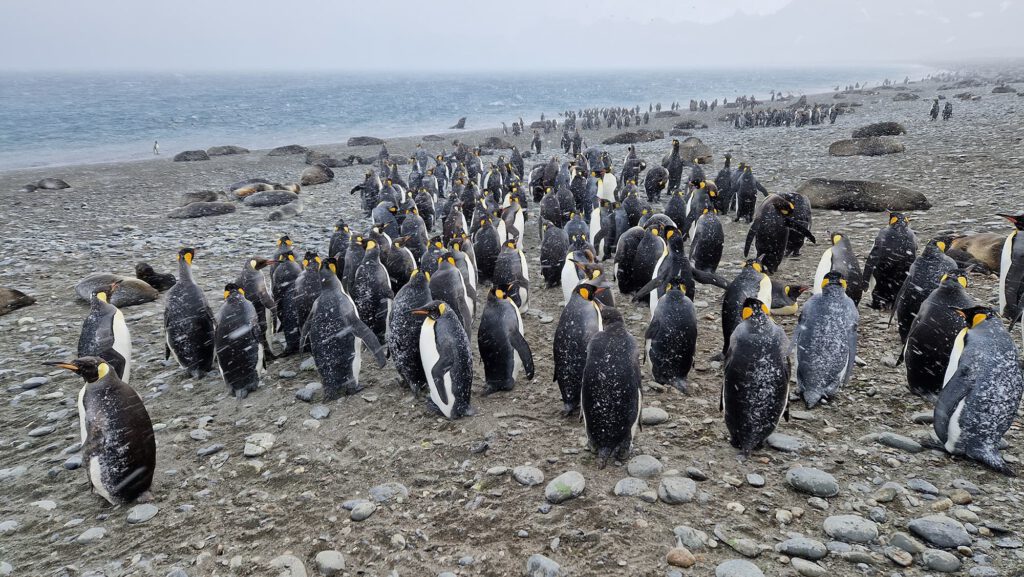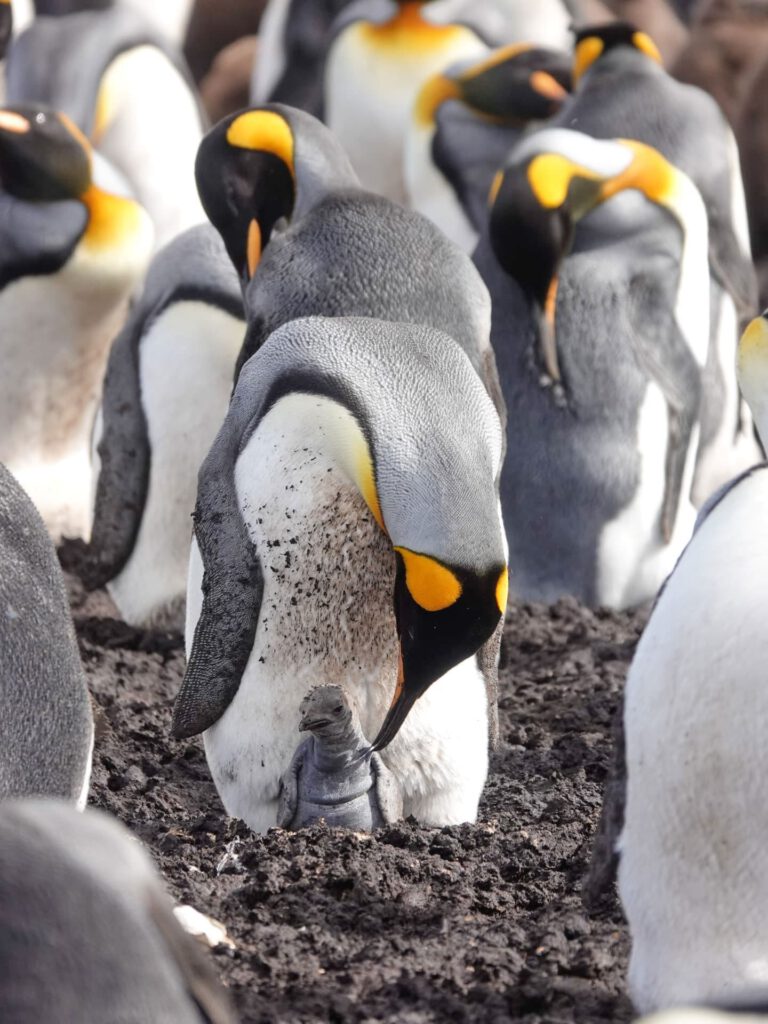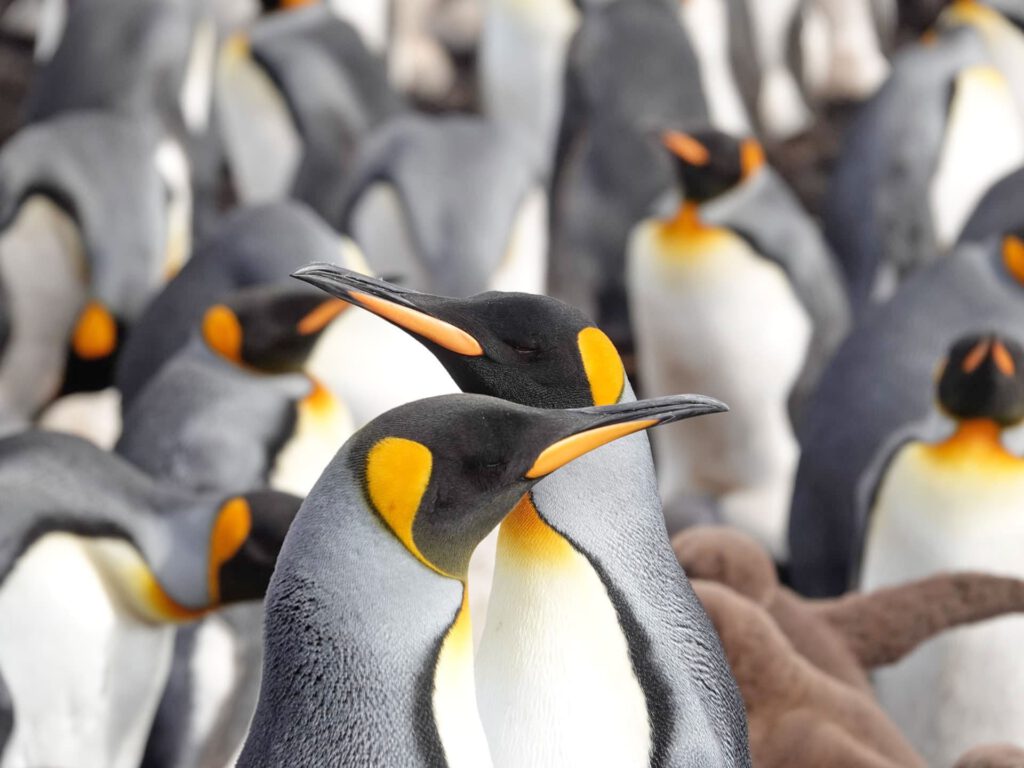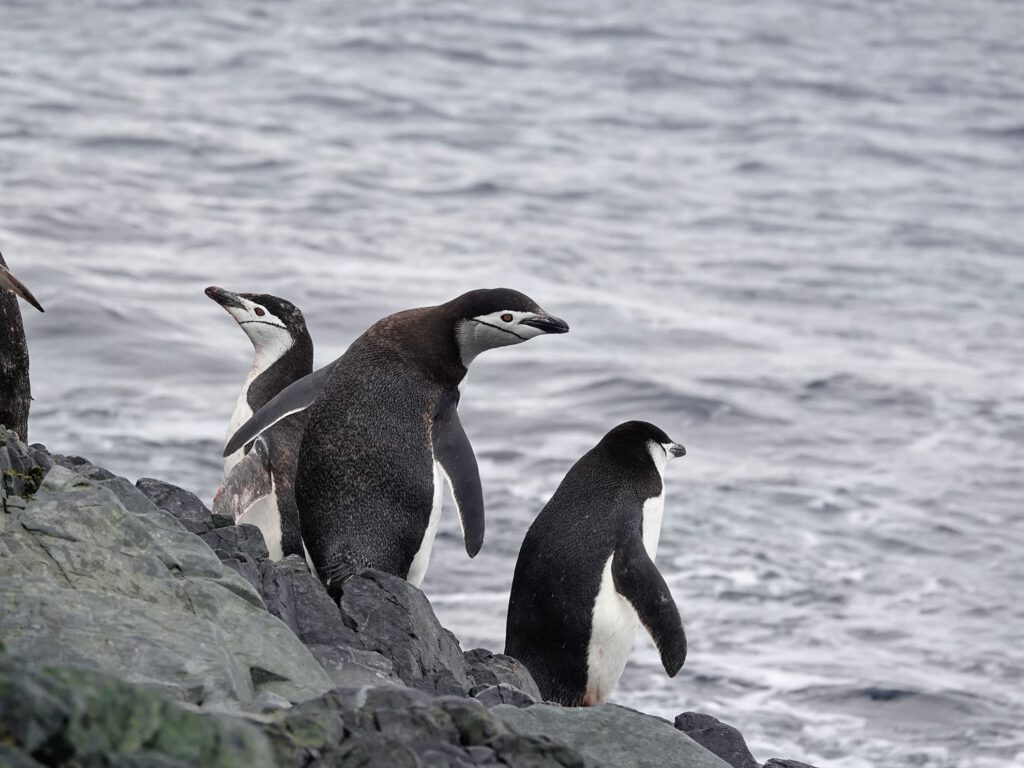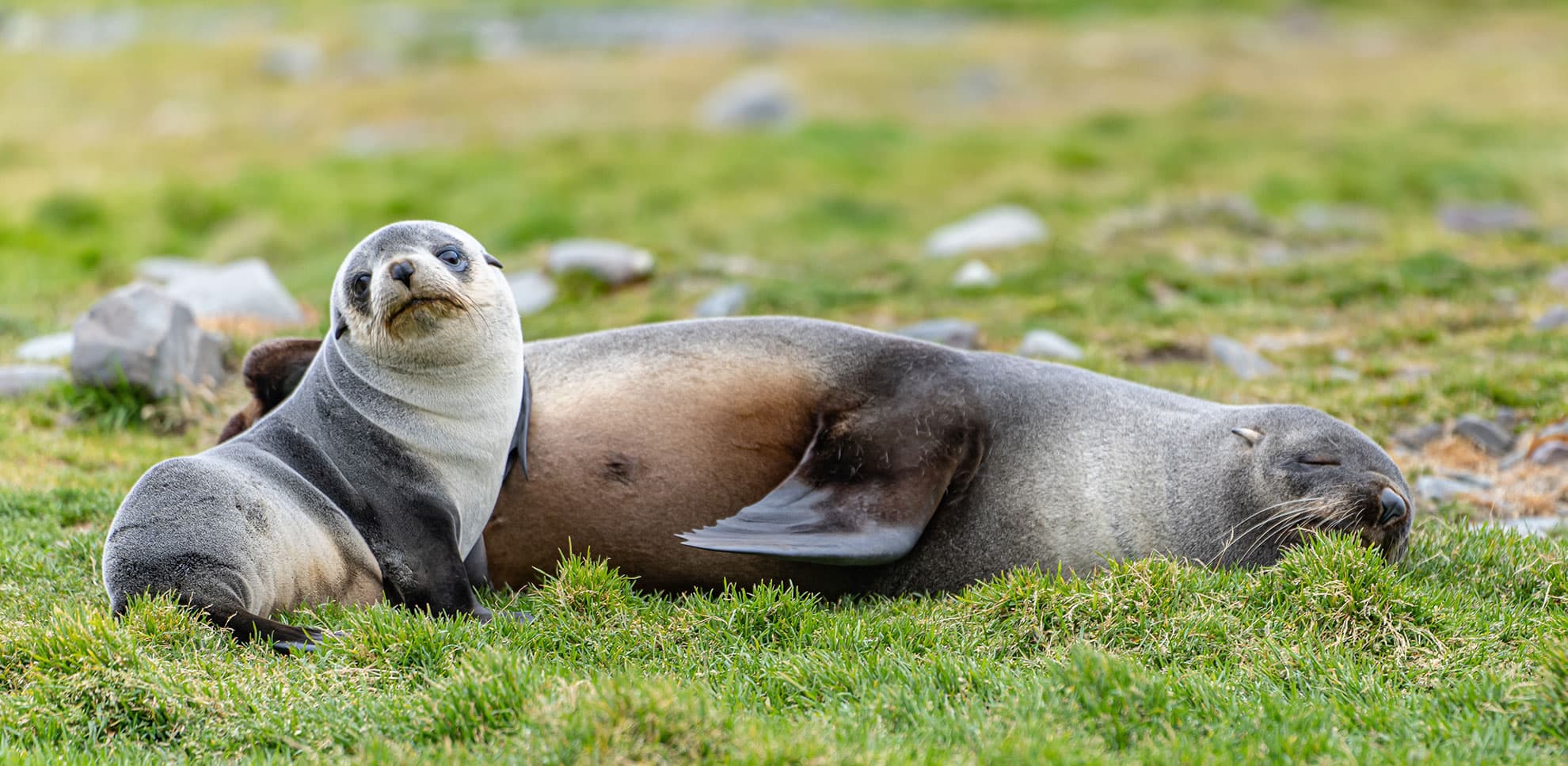South Georgia – An Antarctic oasis
Location
South Georgia and the South Sandwich Islands (SGSSI) are a British Overseas Territory, located approximately 1400 km (860 miles) southeast of the Falkland Islands. The mountainous main island of South Georgia is about 170 km long and between 2 and 40 km wide.
The central mountain range, the Allardyce Range, rises to almost 3,000 metres. The highest peak is Mount Paget.
Surrounded by cold Antarctic waters – the island lies within the Antarctic Convergence – the climate on South Georgia is harsher than its latitude would suggest. More than half of the island, which covers almost 4,000 km2, is permanently covered by ice, and many large glaciers flow from the highest peaks – a sharp contrast to the green belt of vegetation along the coast.
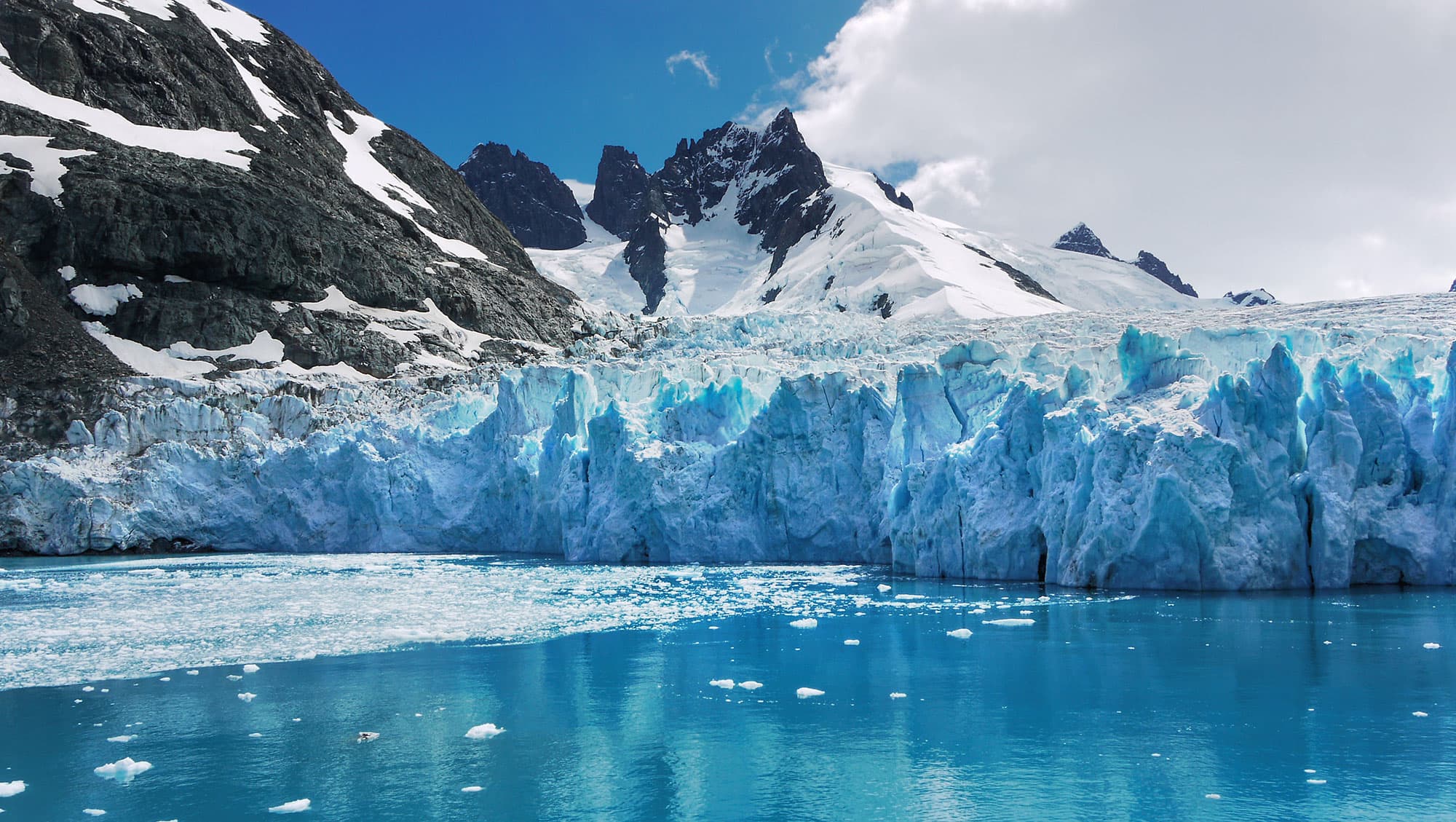
South Georgia and the South Sandwich Islands are only accessible by sea.
This rugged island paradise offers breathtaking views of snow-capped peaks, blue glacier ice and emerald-green bays. The island is also known as the ‘Serengeti of the Antarctic’. It is considered an ‘Antarctic oasis’ in the middle of the stormy Southern Ocean and is home to unique and fascinating wildlife.
History
The storm-lashed sub-Antarctic island was first sighted in 1675 by the London merchant Antoine de la Roche. James Cook, who first explored South Georgia on his second adventurous voyage (1772-1775) in search of the Antarctic continent and mapped part of the coastline to the southern tip, claimed it for the British Crown and named the island ‘Isle of Georgia’ in honour of King George III.
Cook’s report on the island quickly led to its exploitation for economic interests. It attracted numerous adventurers, especially seal hunters. In the 19th century, the fur seals were hunted almost to extinction. In the first half of the 20th century, the island became a centre of whaling and the industrial-scale processing of whale oil. In 1904, the Norwegian Carl Anton Larsen built the first onshore whaling station at Grytviken, which also became the first permanent residence. The Norwegian name of the place was a programme: ‘Gryte’ means kettle or pot, ‘vik’ stands for bay. The cauldrons, some of which are still preserved today, were used to store the liquid tran oil until it was shipped to Europe during the Antarctic summer. A total of 175,000 whales were processed at seven stations on South Georgia before the industry collapsed in the early 1960s and the whaling stations were abandoned.
Even today, relics of this industry can be found at various points on the island – a reminder and memorial to the human history of the exploitation of natural resources.
South Georgia is not permanently inhabited, but the British Antarctic Survey (BAS) maintains two bases on South Georgia, King Edward Point and Bird Island.
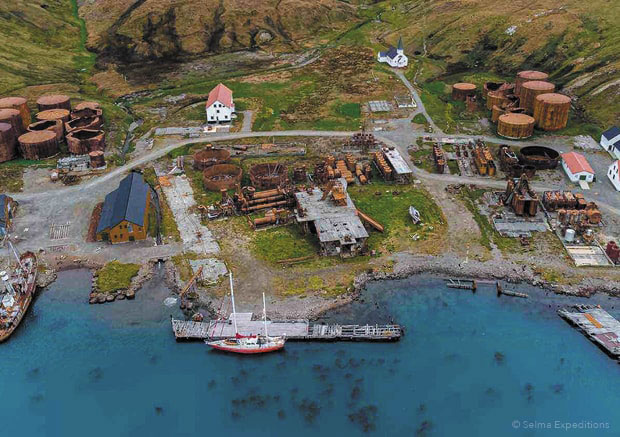
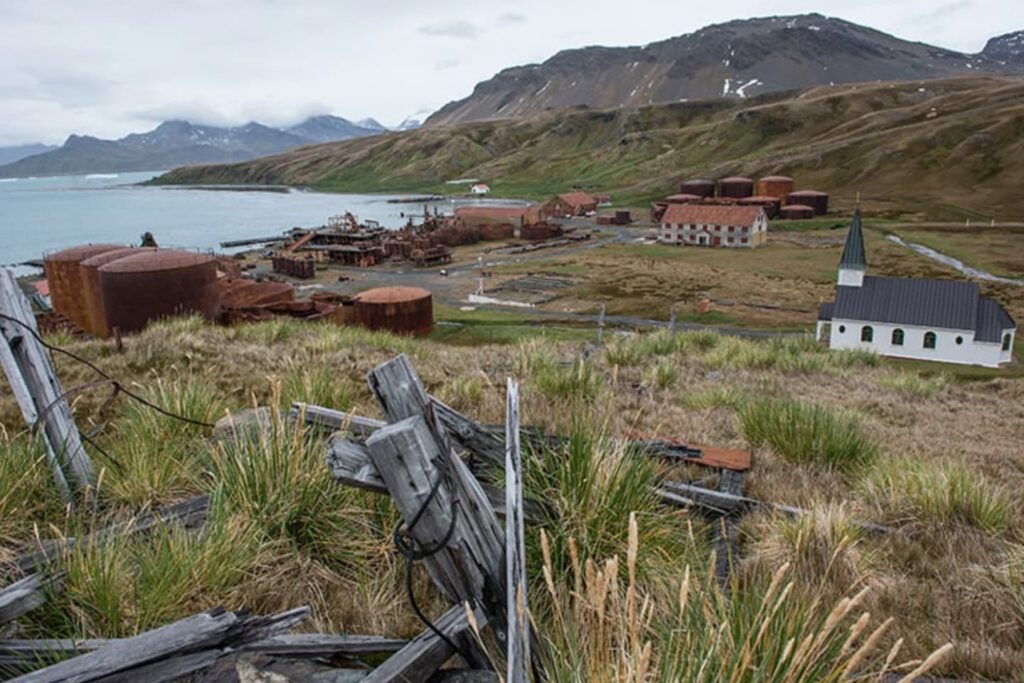
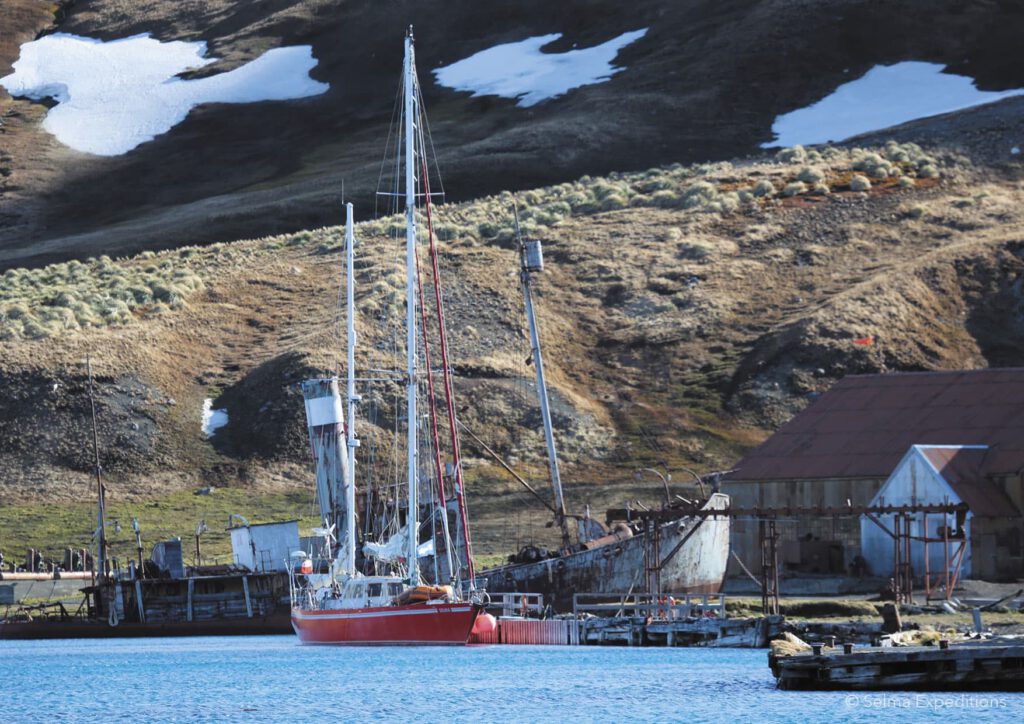
Age of discovery
Due to its proximity to the Antarctic, South Georgia has been a regular port of call for expeditions to the Antarctic since 1900. The island’s history is particularly associated with one great explorer: Sir Ernest Shackleton.
110 years ago, South Georgia was the scene of an unprecedented story. Sir Ernest Shackleton, who had set out to be the first to cross Antarctica, finally found rescue at a whaling station in Stromness after a long odyssey. He had left the majority of his men on Elephant Island after they lost their ship – the Endurance – in the pack ice of the Weddell Sea and were stuck in the ice for more than a year. He and a small crew in an open lifeboat covered 800 nautical miles in the stormy South Atlantic and finally had to cross the island and the glaciated central mountain range to reach help. With his incredible stamina, his leadership and thanks to the support of great personalities such as Worsley, Wild, Crean and Co., Shackleton managed to save the lives of his entire crew. It is not for nothing that the story of Sir Ernest Shackleton is one of the great adventures of the age of polar exploration.
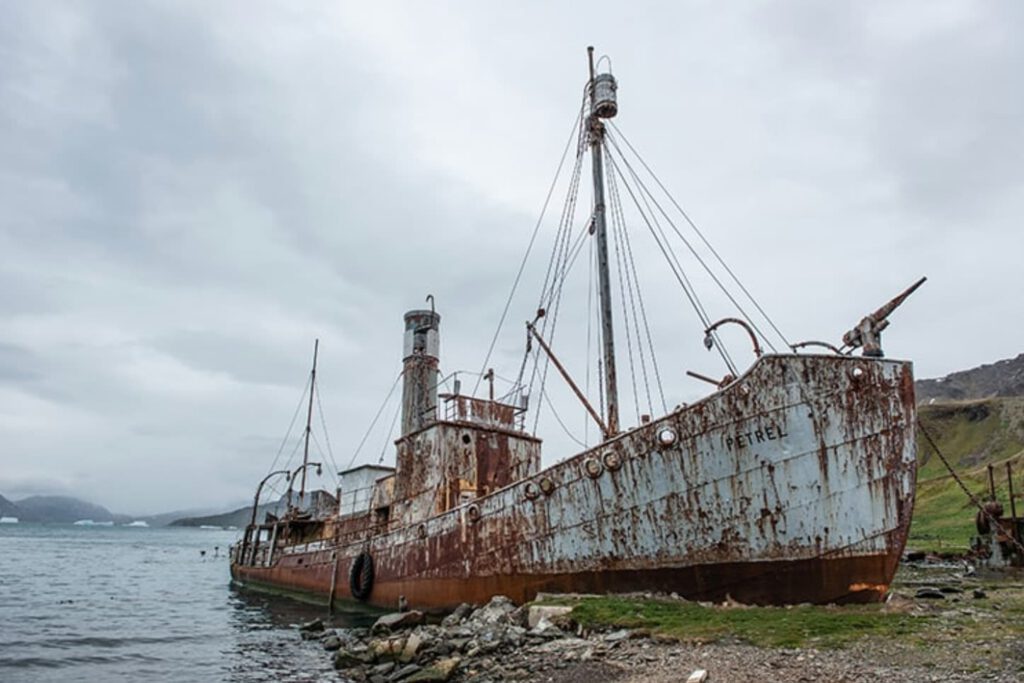
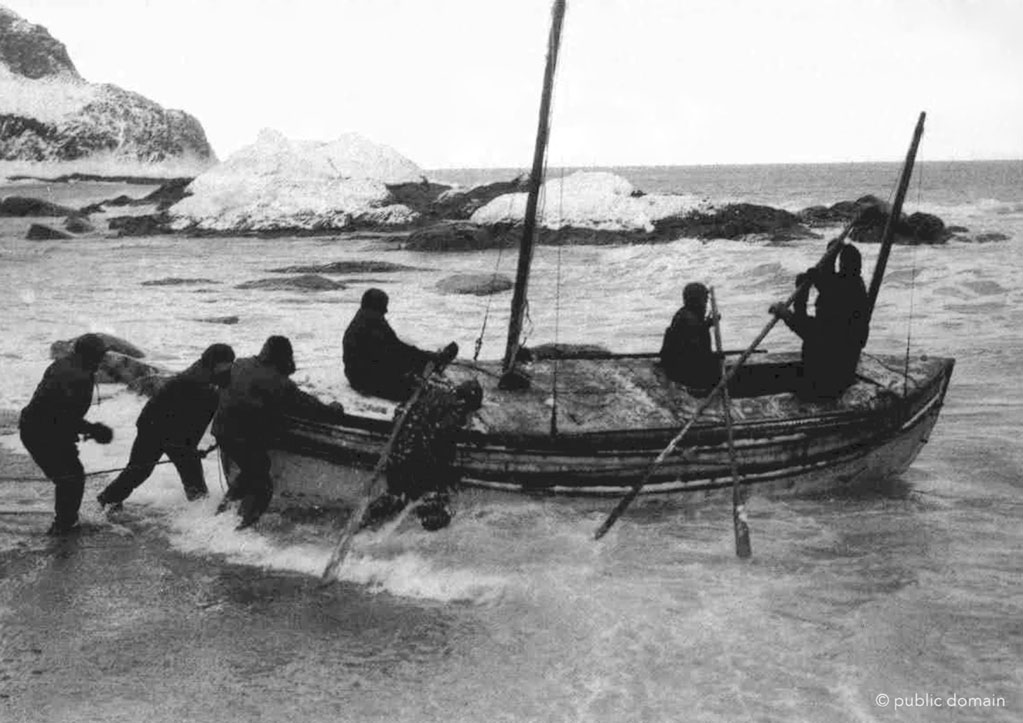
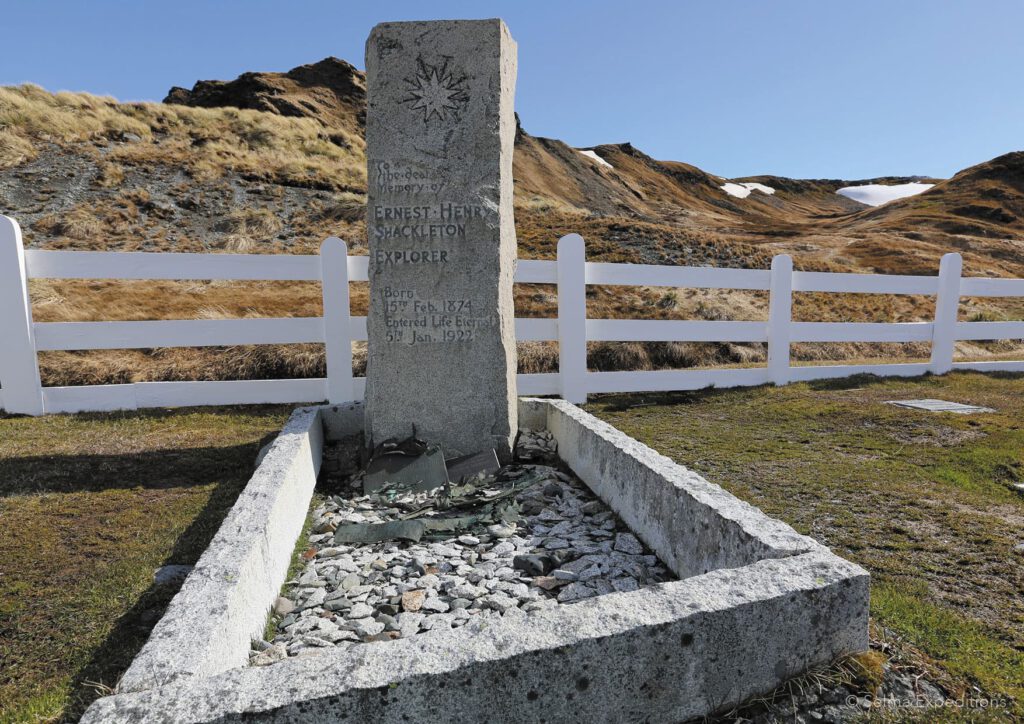
Nature and wildlife
The ecosystem of South Georgia is of global significance. The remote, relatively untouched and rich habitat is a sanctuary for large populations of marine mammals and seabirds, including globally threatened species such as the iconic wandering albatross. Together with the South Sandwich Islands, it is home to 65 million breeding birds of 30 different species, including the world’s only sub-Antarctic songbird, the endemic South Georgia Pipit.
The number of marine mammals on the remote island is also in the millions. Antarctic fur seals and elephant seals are ubiquitous, fighting over their territories and waging harem battles. Behind the beaches populated by countless penguins (gentoos, chinstrap penguins, macaroni penguins, king penguins), fur seals and elephant seals, hidden in the tall tussock grass, petrels and the world’s largest seabird, the wandering albatross, breed. One of the most important colonies of king penguins populates St. Andrews Bay.
Whales, once hunted almost to extinction, have also returned. The waters around South Georgia are very productive and an important habitat for migratory marine mammals, rich in fish and Antarctic krill – an important link in the Southern Ocean food web.
